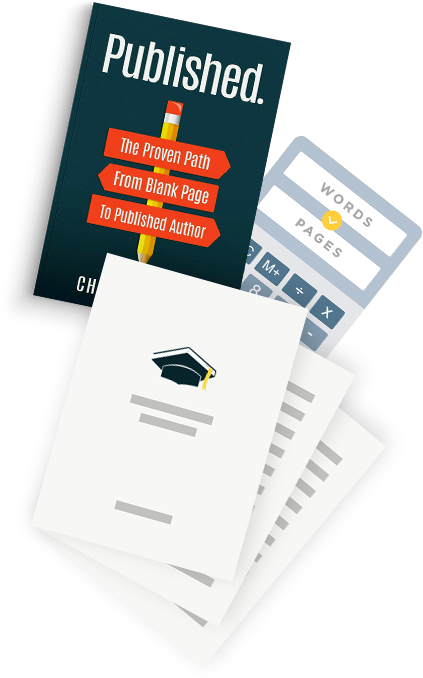Writer’s block can sometimes feel insurmountable. You sit and stare at your blinking cursor in a blank document and just can’t conjure the next—or first—sentence. One practice for pushing through a block is by learning stream of consciousness writing.
The Stuck Writer’s Tool: What is stream of consciousness writing?
Stream of consciousness writing is exactly what it sounds like—you write everything you think, in the order you think it.
In a stream.
Of consciousness.
It might be thoughts that pop up, things you observe, feelings that arise. Thought-to-thought, it may not make sense in order, but that’s just how brains are.
To write a stream of consciousness, write down every thought that flows through your head as it comes, for however long you’d like to. This practice is good for knocking creativity loose, working through a writing block, as a writing session warm-up, or as a daily practice.
Is it good for authors to write a stream of consciousness?
Yes, most authors can benefit from writing a stream of consciousness. The book The Artist’s Way has a popular task, which is writing three pages of free thought every morning. This “unlocks” creativity and gets you ready to write.
Writing in a stream of consciousness can help get you unstuck on your story as well! If you’re stuck on a particular character or other facet, you might try free-writing about it. Release judgment and let your thoughts flow. You can sift through it afterward and find something usable.
Is stream of consciousness writing good for non-writers?
Yes! Free-writing can be a cathartic, grounding act. It’s like journaling and meditation combined into one activity. Writers and non-writers alike can benefit from this type of writing.
How to write a stream of consciousness
Writing stream of consciousness is pretty straightforward! Most writers prefer to do it with pen and paper, but a cyber document can work just as well. There are a few ways you might structure your free-write sessions:
- You can set a word count or page goal (like the Artist’s Way assignment)
- Set a timer—5 to 20 minutes is typical. Do what makes sense for you!
- Write until you feel like you’re done, or until you’ve hit the inspiration you needed for the certain project you were stuck on.
And that’s it! Some writers throw these away, some save every session. Experiment with a few methods to see what works best for your creative process. The only rule is that you DON’T judge or analyze the thoughts while you write.
Put your editing brain aside for this.
I also don’t recommend showing anyone else your stream of consciousness either, because that might taint your next session! Keep it for yourself, and don’t judge the quality.
Example of a stream of consciousness
If you’re still like, “Hannah, what are you even talking about?” Let me demonstrate.
Stream of consciousness example:
I’m writing a blog post right now, and after I finish this one, I’ll write two more, then I’ll play a little Stardew Valley. I currently have 8 Stardew Valley worlds, which might seem like way too many, but what if I told you I’m starting another one tonight? Wild. I really don’t think Elf would hold up if I watched it as an adult, so I’m not going to ruin it for myself by watching it again. It can live happily in my memories. Zooey Deschanel looks quite haunting as a blonde, and I hope it never happens again. My dog is licking her feet loudly beneath my desk, and sometimes I wish dogs could feel shame.
It’s literally every thought that passes through your head. Just flow with it! Don’t try to control or direct your writing—follow it. This can allow your subconscious to help you make realizations and connections you hadn’t before. It’s also a calming way to express yourself and work through emotions.
Stream of consciousness writing prompts
While streams of consciousness start anywhere with anything—there, that thought you just had, you might write that down and see where it goes. But if you’re one of those people who need a specific assignment to begin a project, here are a few prompts you might try:
1. Look around and find something that is your favorite color—briefly describe it.
2. Notice what emotion you currently feel the strongest—describe it.
3. Write out a few lines of that song that’s been stuck in your head.
4. Write your biggest worry.
5. Make a to-do list of today’s tasks.
Streams of consciousness are one more tool writers have to work through blocks, stalls, and moments of no inspiration.
Next Step
Start your stream of consciousness writing right now! Either go straight off the cuff, or take one of the prompts we listed above. If you need more inspiration, here are more writing prompts to get the words flowing.



